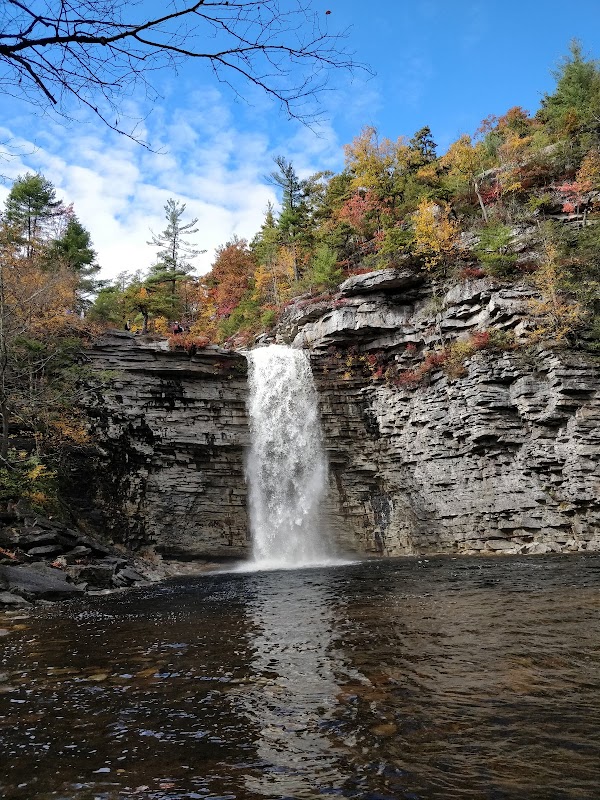
Exploring the Annual Birding Festival at Marine Park, New York: A Practical Guide
Marine Park's Annual Birding Festival draws beginners and experts alike to explore urban wildlife in action. Discover practical tips and seasonal insights to make your visit both inspiring and efficient amid Brooklyn’s vibrant natural scene.
Wear Waterproof Footwear
Marshy trails and occasional mud can catch hikers off guard. Waterproof shoes or boots provide comfort and prevent slips.
Bring Binoculars and a Field Guide
Enhance your birdwatching with binoculars to spot distant species, alongside a field guide or app to identify local birds accurately.
Plan Your Visit for Early Morning
Bird activity peaks at dawn and early morning; arriving early maximizes spotting opportunities amid cooler temperatures.
Use Layered Clothing
Coastal winds can cool the air quickly; layering allows you to adapt as temperatures fluctuate during day hikes.
Exploring the Annual Birding Festival at Marine Park, New York: A Practical Guide
Each fall, Marine Park in Brooklyn transforms into a lively arena for birdwatchers drawn by the Annual Birding Festival — a celebration of winged visitors that have made this urban green space their seasonal stopover. The park’s 530 expansive acres are alive with movement and sound, the branches quivering under the weight of warblers, woodpeckers, and hawks, each feathered participant fiercely itself in a dance of migration.
The festival is more than just a chance to see birds; it's an invitation to engage with a shifting, vibrant ecosystem where the salt marshes dare the tide to push them back, and wooded paths watch with patient eyes as visitors advance. Visitors can expect trails ranging from easy paved loops to uneven natural paths that stretch up to 3 miles total— manageable for beginners yet engaging enough for more seasoned hikers. Elevation changes are slight, but expect occasional muddy patches that testify to recent rains or tidal surges.
To fully experience Marine Park’s birding, timing your visit between September and mid-November is key. Dawn and dusk walks reveal the most activity, as birds shift feeding spots and communities settle down. Early morning light cuts crisply through the trees, casting clear shadows while dew clings stubbornly to leaves.
Practical preparation is essential: sturdy waterproof shoes will keep you comfortable through marshy sections, and a lightweight binocular along with a bird guide app can transform a casual glance into a moment of discovery. Layers are smart, as coastal breezes can chill the skin even on mild autumn days.
The festival also offers workshops and guided walks, geared toward all skill levels, giving you tools to identify calls and plumage differences that bring this outdoor classroom buzzing to life. You’ll meet local experts eager to share lesser-known facts about the park’s osprey nesting boxes or the herons that stalk the wetland ponds with relentless focus.
Whether you come to track a rare sparrow or simply enjoy a stroll threaded with avian music and occasionally sharp breeze, Marine Park’s Annual Birding Festival balances gentle adventure with education. It’s a reminder that nature’s rhythms pulse strongly here, in a city that otherwise never stops moving. Engaging with this park’s birds and their environment creates a vital bond, one that urges respect, careful listening, and an appreciation for a community that continues to thrive under Brooklyn’s ever-watching sky.
Nearby Trips
All Adventures
Boat Charters
Water Activities
Adventures near Marine Park, New York
Discover the unique and memorable adventures that make Marine Park, New York special.
Frequently Asked Questions
What are the best times during the festival to see the most birds?
Early mornings are the most active for bird sightings, especially just after sunrise when many species feed and move about. Mid-September through mid-November is peak migration season in Marine Park.
Are dogs allowed on the birding trails during the festival?
Dogs are permitted but must be leashed at all times to minimize disruption to wildlife given the sensitivity of nesting and migratory birds.
Is the terrain accessible for families with young children or elderly visitors?
Yes, most trails are flat with paved options, making them accessible for children and older visitors. However, some natural trails may become muddy, so sturdy footwear is advisable.
What types of birds are commonly seen during the festival?
Expect to see warblers, hawks, ospreys, woodpeckers, herons, and various waterfowl. Rare sightings can include certain sparrows and shorebirds passing through.
Are there educational activities available during the festival?
Yes, the festival offers guided bird walks, workshops on identification, and kid-friendly activities to cultivate appreciation for local wildlife.
What environmental efforts are in place to protect the bird habitats at Marine Park?
The park employs habitat restoration, including native plantings and control of invasive species, plus ongoing monitoring of sensitive nesting sites to minimize human impact during key periods.
Recommended Gear
Waterproof Hiking Boots
Protects feet in wet and muddy sections common in fall marshlands.
Binoculars
Essential for close-up observation of birds without disturbing their natural behavior.
Layered Clothing
Allows adaptation to coastal breeze chills and fluctuating temperatures throughout the day.
Insect Repellent
Keeps mosquitoes and other biting insects at bay during summer visits.
Local Insights
Hidden Gems
- "The salt marsh overlook platform offers an unobstructed view of feeding waterfowl rarely crowded with visitors."
- "The freshwater pond on the south side is a quiet spot where you can often hear elusive kingfishers darting by."
Wildlife
- "Ospreys nesting in tall pine trees"
- "Great blue herons stalking the marsh edges"
- "Occasional sightings of migrating hawks overhead"
History
"Marine Park’s land was originally part of a natural salt marsh, protected and expanded as parkland through conservation efforts that began in the 20th century, anchoring it as a key habitat amid urban growth."
